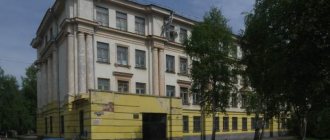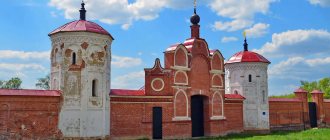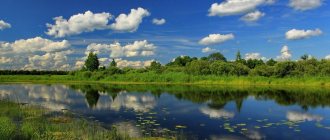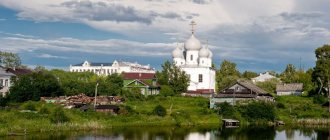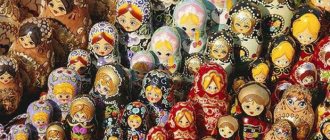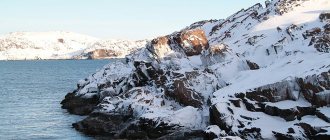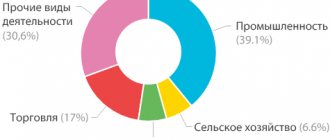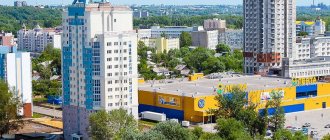The Amur Region is part of the Far Eastern Federal District. Using a map of the Amur region from a satellite, you can see that the administrative city of the region is Blagoveshchensk.
The region covers an area of more than 350 thousand square kilometers. The region borders both the Khabarovsk Territory, the Trans-Baikal Territory, and the Republic of Sokha. Also, part of the territory is in contact with the Chinese border. The region has no access to the sea. This is clearly displayed by the map of the Amur region.
Using the map, you can easily find any object in the region and create wonderful routes around Russian cities. She is a faithful assistant during the trip and in planning excursion programs.
What holiday is it today?
January 22, 2022, Saturday
Today are holidays, events: Day of Unification of Ukraine Tomorrow: Premiere of the opera “Eugene Onegin” at the Bolshoi Theater
Today is the Orthodox holiday: Martyr Polyeuctus. St. Philip, Metropolitan of Moscow and All Russia, wonderworker... Tomorrow: St. Gregory, Bishop of Nyssa. Venerable Markian the presbyter. Venerable Dometian, Bishop of Melitino. St. Paul of Komel, wonderworker, student of St. Sergius of Radonezh. Saint Theophan, the Recluse of Vyshensky...
Today is a national holiday: St. Philip's Day... Tomorrow: Gregory - Summer Guide...
Seasons
Seasons, four periods of the year (spring, summer, autumn and winter) characterized by certain average temperatures. The period during which the Sun passes through one of these sectors is called the season. Spring in the Northern Hemisphere and autumn in the Southern Hemisphere begin when the Sun passes through the initial circle of declination and its right ascension is 0° (vernal equinox). Summer in the Northern Hemisphere and winter in the Southern Hemisphere occur when the sun's right ascension is 90° (summer solstice). Autumn in the Northern Hemisphere and spring in the Southern Hemisphere begin when the sun's right ascension is 180° (autumnal equinox). The beginning of winter in the Northern Hemisphere and summer in the Southern Hemisphere is considered to be the winter solstice, when the direct ascension of the Sun is 270°... Next: Seasons. Russian folk calendar. Monthly words...
Authorities
The governor of the region and the governing bodies formed by him constitute the system of executive power of the Khabarovsk Territory. He also represents the region in relations with federal bodies of Russia and with government bodies of other constituent entities of the Russian Federation.
The executive body of state power of the Khabarovsk Territory is the Government of the Khabarovsk Territory, which since May 6, 2009 has been headed by the Governor of the region, Vyacheslav Ivanovich Shport (from 1991 to 2009, Viktor Ishaev).
The permanent representative and legislative body of power is the Legislative Duma of the Khabarovsk Territory. The quantitative composition of the Legislative Assembly includes 26 deputies elected for four years. The work of the Legislative Duma is led by its Chairman, elected by deputies by secret ballot.
Judicial power in the Khabarovsk Territory is exercised by the courts that are part of the unified judicial system of the Russian Federation.
Governor-General of the Amur Region
Chapters since the formation of the region
Folk calendar about every day
Every day one season always replaces another and this determines a person’s way of life. In connection with this, a folk calendar was formed in which there were practically no nameless, unmarked days. Every day was special, had its own purpose. All this was determined by climate conditions and astrological phenomena.
A calendar is a system for counting periods of time. The first calendars arose a long time ago, in ancient times, because there was a need to measure time. The word calendar comes from the Latin words caleo - to proclaim and calendarium - debt book. This is due to the fact that in Ancient Rome the beginning of each month was especially proclaimed, and because it was customary to pay debts on the first day of the month. Different peoples counted time differently. Some calendars are based on the changing phases of the moon - lunar calendars; in others - the change of seasons - sunny; in others, the length of the year was coordinated with the change of seasons, and the counting of months was associated with the phases of the Moon. Such calendars are called lunisolar.
In Rus', the calendar was called a monthly calendar. Every day, the month book covered the entire year of peasant life, “describing” day by day, month after month, where each day had its own holidays or weekdays, customs and superstitions, traditions and rituals, natural signs and phenomena. The cyclical nature of the calendar is reminiscent of human life, where spring is youth, summer is heyday, autumn is the time of harvesting fruits (it’s good if there are some, otherwise you can live your life without collecting fruits), winter is the time of wisdom and peace. This cyclicality and rhythm determined the way of life of the farmer. The folk calendar was an agricultural calendar, which was reflected in the names of the months, folk signs, rituals and customs. Even the determination of the timing and duration of the seasons is associated with real climatic conditions. Hence the discrepancy between the names of the months in different areas... Next: Folk calendar...
Government of the Amur Region
The Amur Region is located in the southeast of the Russian Federation and is part of the Far Eastern Federal District. The distance from its administrative center - Blagoveshchensk to Moscow by rail - 7982 km, by air - 6480 km. The region is located somewhat closer to the north pole (about 5000 km) than to the equator (about 6000 km).
The Amur region does not have direct access to the seas. Its northeast is only 150 km away from the cold Sea of Okhotsk (known as the “bag of ice”), and the middle regions are 500-600 km away. It is 600-800 km away from the warm Sea of Japan.
Most of the region is located in the Upper and Middle Amur basin, which determines its name.
The region is included in the 8th time zone together with the Republic of Sakha (Yakutia), where the difference with Moscow time is 6 hours. When it is noon here, in Moscow it is 6 am, and in Washington it is 10 pm yesterday.
The region is located in the temperate geographical zone, between 48° 51″ and 57° 04′ N latitude. and 119° 39″ and 134° 55″ E. Its southern regions lie in the same latitudes as Kyiv, Prague, Paris in Europe, Winnipeg and Vancouver in Canada, and its northern regions lie in the same latitudes as Kazan, Nizhny Novgorod, Moscow, Riga, Copenhagen, Glasgow, and the Commander Islands. Bashkiria, Belarus, Poland, Great Britain, and Southern Canada are located practically at the same latitudes as the Amur region. The northernmost point is on the river. Khani (northwest of the region), the southernmost one is on the river. Amur, eastern - on the Yam-Alin ridge, western - on the border with Transbaikalia, on the Kalarsky ridge.
The economic-geographical position of the region (EGP) has its pros and cons. Of the favorable features of the EGP, it is necessary to note, first of all, the following:
— The Amur region, as an integral part of the Far East, neighbors the countries of the Asia-Pacific region (APR). Occupying a border position, it is a “river gateway” to China.
— Proximity to the raw material bases of Yakutia (coal, and in the future - iron ores), Transbaikalia (non-ferrous metal ores, coal), Khabarovsk Territory (Urgal coal).
— Favorable transport and geographical location. The region passes through: the Zeya - Amur waterway with access to the Tatar Strait; The Trans-Siberian Railway, the Baikal-Amur Mainline (the central section with access to South Yakutia) and the Moscow-Vladivostok federal highway.
— The economic and geographical situation has improved in the last 10-15 years due to the beginning of active cross-border trade with China. (It is known that in 1960-1970 the border with China was considered a risk factor due to strained relations between the PRC and the USSR).
Unfavorable factors:
~ Distance from economically developed regions of Russia (5-8 thousand km to Western Siberia, the Urals and the European part).
~ Lack of direct access to the seas (which is available, for example, in Primorye with its ports).
The peculiarity of the political-geographical position is access to the south-eastern borders of Russia and China (more than 80% of the population and economy of the region are located in the border zone).
The borders of the region almost everywhere follow natural boundaries: the southern border for 1254 km runs along the Amur, the northern and eastern borders along the Stanovoy Range, the Dzhugdyr, Dzhagdy, Selemdzhinsky, Yam-Alin, Aesop, and Turan ridges. Only on the border with the Chita region there are no clearly defined natural boundaries.
The region borders in the north with the Republic of Sakha (Yakutia), in the east - with the Khabarovsk Territory and the Jewish Autonomous Region, in the south - with the People's Republic of China, in the west - with the Chita Region.
The Amur Region has existed within its modern borders since August 2, 1948, when it was separated from the Khabarovsk Territory. The total length of its borders exceeds 4300 km.
The area of the Amur Region is 363.7 thousand km2 (2.1% of the area of the Russian Federation). On a European scale, this would be a large state, second in size only to France, Spain, Sweden, and Ukraine. Approximately equal in area to Germany - 356.9 thousand km2 and Japan - 377.8 thousand km2. The territory of the Amur Region could accommodate 12 countries such as Belgium or 9 Switzerland.
The greatest length of the region's territory from north to south is 750 km (along the roads from Tynda to Arkhara - 1050 km, this is 15-20 hours by car). From northwest to southeast, the region extends for 1150 km.
Since the annexation of the territory of the Amur region to Russia, it was part of the East Siberian region (center - Irkutsk), and in 1884-1917. - Priamursky (center - Khabarovsk) Governor General. In 1918, the region was proclaimed the Amur Labor Socialist Republic. In 1920-1922 it was part of the Far Eastern Republic (FER). Until 1926, it was part of the Far Eastern region and was called a province, divided into 4 districts. Since 1926, 17 districts have been formed in the region, included in the districts (Amursky, Zeysky, Khabarovsk). In 1932-1938. The region was part of the Far Eastern Territory, divided in 1938 into Primorsky and Khabarovsk. The region was part of the latter until 1948.
The sizes of the districts range from 1.8 thousand km2 (Konstantinovsky) to 87.5 thousand km2 (Zeysky). The latter region is comparable in area to Austria, Azerbaijan or three Armenias.
(Geography of the Amur Region: textbook. Edited by N.G. Pavlyuk, 2005)
Fishing calendar for every day
The fishing calendar should not be taken as an absolutely indisputable truth. Fish biting is greatly influenced by a whole range of natural factors, as well as the influence on the nature of man himself. You must not forget that the fish’s bite depends and is determined not only by the calendar dates and biological cycles of their life, reflected in the calendar, but also, no less, by the state of their habitat; the bite also depends on weather conditions: air and water temperatures, cloudiness, wind direction and strength, etc... Next: Fishing calendar...
Orthodox calendar about every day
Orthodox calendar: Orthodox, Church and Christian holidays.
The church year is an alternation of weekdays and holidays. On weekdays, a person is called to work “by the sweat of his brow to earn his bread.” Holidays are given in order to feel liberation, to rise above the bustle and routine of the world, to feel involved in the highest of worlds, “where there are no illnesses, sorrows and sighs, but endless life.” Since ancient times, holiday cycles have been associated with the seasons. The pagans associated them with the worship of the forces of nature, the cult of which in the Old Testament was replaced by gratitude to the Creator for the universe. And although the connection between holidays and the seasons has not completely lost its power, since God is present in everything, in the plant and animal world, in human works, it nevertheless faded into the background, giving way to a spiritual foundation built on the Sacred Scriptures. The history of Orthodox holidays dates back to the times of the Old Testament. Each of the Orthodox holidays is dedicated to the remembrance of the most important events in the life of Jesus Christ and the Mother of God, as well as the memory of saints... Next: Orthodox calendar...
Amur region - where to see in Blagoveshchensk
For tourists who are planning a walk around the historical city of the Amur region, there are many exciting places. Among them:
- Triumphal Arch. Even before Nicholas II was crowned, he traveled throughout Russia. When it became known that he would visit Blagoveshchensk, it was decided to build an arch twenty meters high. It was located on the coast of the Amur River in 1891. Unfortunately, the structure was destroyed by a flood in the thirties. In the 2000s, it was decided to restore the object based on photographs. It turned out that the chosen location coincided exactly with the location of the previous structure. During construction, parts of the foundation of the historical site were discovered.
- Drama theatre. The first theatergoers appeared in the cultural city in the nineteenth century. They staged plays themselves at home or in military barracks. Blagoveshchensk was liked by theater professionals, so they regularly visited it and showed productions. Only in the eighties of the nineteenth century did the authorities decide to build their own theater. This was explained by the high price of renting halls for productions, as well as the large number of creative, active figures.
- Monument "Friend". When the question arises of what to bring from Blagoveshchensk, many tourists choose magnets or keychains with Buddy. This is the famous dog, whose monument was erected after the flood. The dog lived in the suburbs of Blagoveshchensk with his family, but when the disaster happened, people evacuated, and the dog stayed with the neighbors. However, the dog returned to its home to protect it. When the owners returned, the dog met them in water up to their necks. He remained at his post the entire time. The monument is made of bronze and weighs more than 400 kilograms. The dog's front paws rest on the parapet, his eyes are directed to the horizon. There is a tradition - you need to rub the dog’s nose, make a wish, and it will certainly come true.
Russian folk calendar for every day
The word “sign” comes from the word “notice”, i.e. observe. As a result of observing what happens around a person every day, he accumulates life experience. This knowledge was passed down from generation to generation, carefully preserved and people trusted it as a sacred book. Many signs have come to us from the depths of centuries without losing their knowledge. Each of us is free to choose: to dismiss all this as an absurd superstition or to take a closer look at the signs and take the centuries-old experience of generations more seriously. Most of us, when taking exams, ask them to scold them, boasting about some kind of good fortune or luck, spit so as not to jinx them or knock on wood, take a detour if a black cat crossed the road, are afraid of the number 13 and much more. And who among us does not have lucky things, numbers? Who has never resorted to the help of fate at least once in their life, who has not believed in secrets? It’s as if everything connected with signs is hidden somewhere deep in our subconscious. Often we remember them mechanically, unconsciously, or just as a joke. But, undoubtedly, the signs contain a lot of accurate knowledge and practical wisdom of our ancestors. They cover all the characteristic, often difficult to perceive, natural phenomena. Signs have preserved a lot of what was in old folk holidays and customs; they help predict the weather, grow crops... Next: Folk signs...
Tourism of the region
Tourism in this unique area is just beginning to develop. The unusual and unique landscapes of the territory attract many tourists to visit the Amur region. The wonderful combination of mountain ranges and deep rivers makes it possible to develop eco-tourism. There are a large number of nature reserves located on the territory of the Amur Region, almost all of them provide interesting excursions to incredibly beautiful protected areas. Also, many tourists come here for good fishing and hunting.
Save it for yourselfPrint
0
Author of the publication
offline 1 hour
Holiday calendar, dates and events of the year
All state and professional holidays in Russia, including significant World and International holidays, and other equally interesting holidays and events about every day.
The holiday has always kept pace with the history of mankind. Social time can be divided into three types: everyday life (weekdays), weekends and holidays. Everyday life is a series of practices repeated day after day and every day (work). Weekends are regular breaks from the rush of everyday life. It is believed that on weekends a person should restore his strength after working days. Day off, non-working day. A holiday is a day of celebration established in honor or in memory of someone or something. A day or series of days celebrated by the church in memory of a religious event or saint... Next: Calendar...
Administrative division
The Khabarovsk Territory includes 2 urban districts and 17 municipal districts, on the territory of which there are 29 urban settlements and 188 rural settlements.
Urban districts
Municipal districts
| № | Area | OKATO code | Adm. center |
| 01 | Amursky | 08 203 000 000 | Amursk |
| 02 | Ayano-Maisky | 08 206 000 000 | Ayan |
| 03 | Bikinsky | 08 209 000 000 | Bikin |
| 04 | Vaninsky | 08 212 000 000 | Vanino |
| 05 | Verkhnebureinsky | 08 214 000 000 | Chegdomyn |
| 06 | Vyazemsky | 08 217 000 000 | Vyazemsky |
| 07 | Komsomol | 08 220 000 000 | Komsomolsk-on-Amur |
| 08 | Nanaisky | 08 228 000 000 | Trinity |
| 09 | Nikolaevsky | 08 231 000 000 | Nikolaevsk-on-Amur |
| 10 | Okhotsk | 08 234 000 000 | Okhotsk |
| 11 | named after Lazo | 08 224 000 000 | Pereyaslavka |
| 12 | named after Polina Osipenko | 08 237 000 000 | named after Polina Osipenko |
| 13 | Soviet-Gavansky | 08 242 000 000 | Sovetskaya Gavan |
| 14 | Solar | 08 244 000 000 | Solar |
| 15 | Tuguro-Chumikansky | 08 246 501 000 | Chumikan |
| 16 | Ulchsky | 08 250 000 000 | Bogorodskoye |
| 17 | Khabarovsk | 08 255 000 000 | Khabarovsk |
Settlements
| Settlements with a population of more than 5 thousand according to the Territorial Body of the Federal State Statistics Service for the Khabarovsk Territory in 2012 | |||||||||||||||||||||||||||||||||||||||
|
Prayer book, Orthodox prayers for every day
Prayer is the most powerful means for healing all illnesses - both physical and mental. Prayers can be laudatory or grateful, petitionary and repentant. If we have offended God, sinned, we must ask Him for forgiveness, that is, repent. Such prayers are called repentant prayers. If everything is fine with us, if we and our loved ones are healthy and prosperous, if we have a place to live, something to wear, something to eat, we must glorify and thank God for this. Such prayers are called praise or thanksgiving. If some misfortune, illness, trouble or need happens, you need to ask God for help. Such prayers are called petitionary... Next: Orthodox prayers...
Zodiac, astrological, eastern calendar. Zodiac signs
In ancient times, to establish the calendar, priests used knowledge of the positions of all the planets. Before the reform of Peter 1, the New Year was celebrated on the Day of the Autumn Equinox. On this day, according to ancient legend, the most peaceful treaty was concluded between the Great Race (ancient Slavs) and the Great Dragon (ancient Chinese) and it was approximately 7518 years ago... For the ancient Slavs, the calendar month corresponded to the lunar cycle from new moon to new moon, taking into account such Thus, the relationship of the entire annual cycle with astronomical and natural phenomena. There was no coherent calendar system. The main natural phenomena are still considered to this day to be the days of the solar equinox and solstice - the Slavic holidays Maslenitsa, Kupala, Ovsen and Kolyada. But during the time of Peter 1, all ancient Slavic calendars were abolished and a new Western European calendar from the Nativity of Christ (Julian calendar) was introduced, while the beginning of the calendar was moved to January 1. The Julian calendar (old style) did not take leap days into account and accumulated one extra day every 128 years. After the October Revolution in 1918, the Gregorian calendar (new style) was introduced in Russia, according to which an amendment of 13 days was introduced. The calendar of the ancient Slavs was based on two planets: the Sun and the Moon. And now they don’t use anything at all. The calendar has become static. There is no such thing as the calendar, it turns out, resting on some planet. Nobody even knows about it. There are just some standard numbers, there are months and holidays. The calendar is based on the Sun and Moon. Why is this so? Because these two luminaries influence the Earth. The Earth revolves around the Sun, and the Moon revolves around the Earth. And these two luminaries create the atmosphere on the planet. From here the calendar is built... Next: Astrological calendar...
Road connections
The main transport system of the region is the Trans-Siberian Railway, which runs throughout the southern part. In addition, the Baikal-Amur Mainline, which extends north from the Trans-Siberian Railway, is of great importance.
In addition, branches depart from the Trans-Siberian Railway to the south in the area of Skovorodino, Blagoveshchensk and Raichikhinsk.
There are two federal highways located on the territory of the region - Amur (R-297) and Lena (A-360).
Part of the Amur from Blagoveshchensk and downstream is navigable, which allows small ships from the Pacific Ocean to reach the regional capital. Part of the Zeya River located below the Zeya hydroelectric station is also navigable for small vessels.
Dream books online, interpretation of dreams
A dream book is nothing more than an interpreter of dreams and dreams, a translator of dreams. Since ancient times, people have been using dream books; dreams have always been given great importance, and people have often noticed the prophetic properties of some dreams. The dream book can become your faithful assistant every day and throughout your life, thanks to the dream interpreter you can always make the right decisions, the dream book will help you resist temptations in time, and will warn you against wrong steps and frivolous actions. Further…
